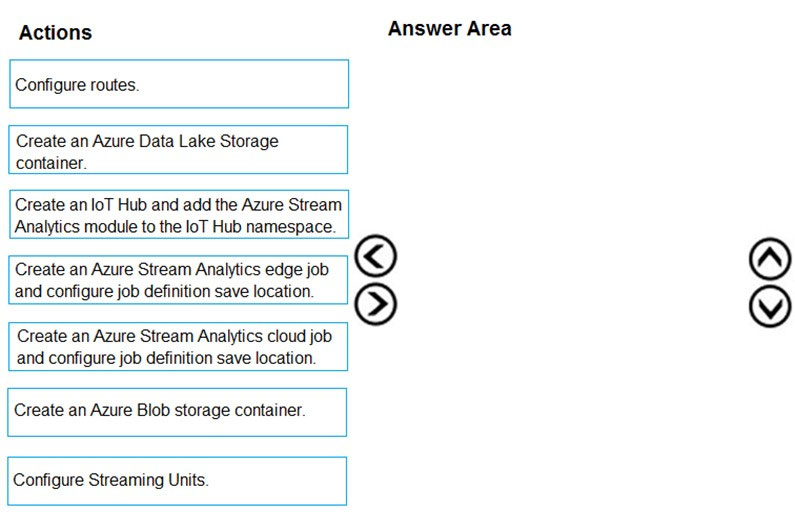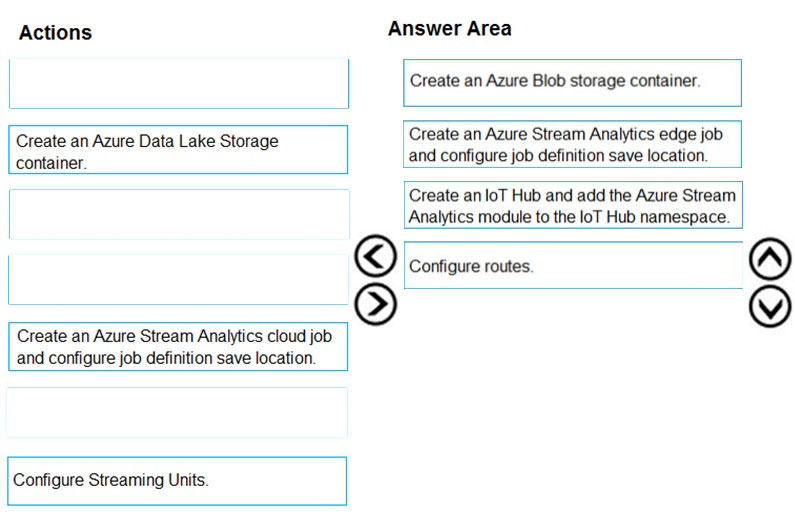Question 92 of 170 from exam DP-200: Implementing an Azure Data Solution
Question
DRAG DROP -
You develop data engineering solutions for a company.
You need to deploy a Microsoft Azure Stream Analytics job for an IoT solution. The solution must:
-> Minimize latency.
-> Minimize bandwidth usage between the job and IoT device.
Which four actions should you perform in sequence? To answer, move the appropriate actions from the list of actions to the answer area and arrange them in the correct order.
Select and Place:

Explanations

Step 1: Create an Azure Blob Storage container
To prepare your Stream Analytics job to be deployed on an IoT Edge device, you need to associate the job with a container in a storage account. When you go to deploy your job, the job definition is exported to the storage container.
Step 2: Create an Azure Stream Analytics edge job and configure job definition save location
When you create an Azure Stream Analytics job to run on an IoT Edge device, it needs to be stored in a way that can be called from the device.
Step 3: Create and IoT hub and add the Azure Stream Analytics module to the IoT Hub namespace
An IoT Hub in Azure is required.
Stream Analytics accepts data incoming from several kinds of event sources including Event Hubs, IoT Hub, and Blob storage.
Step 4: Configure routes -
You are now ready to deploy the Azure Stream Analytics job on your IoT Edge device.
The routes that you declare define the flow of data through the IoT Edge device.
https://docs.microsoft.com/en-us/azure/stream-analytics/stream-analytics-add-inputs https://docs.microsoft.com/en-us/azure/iot-edge/tutorial-deploy-stream-analytics https://docs.microsoft.com/en-us/azure/stream-analytics/stream-analytics-edge